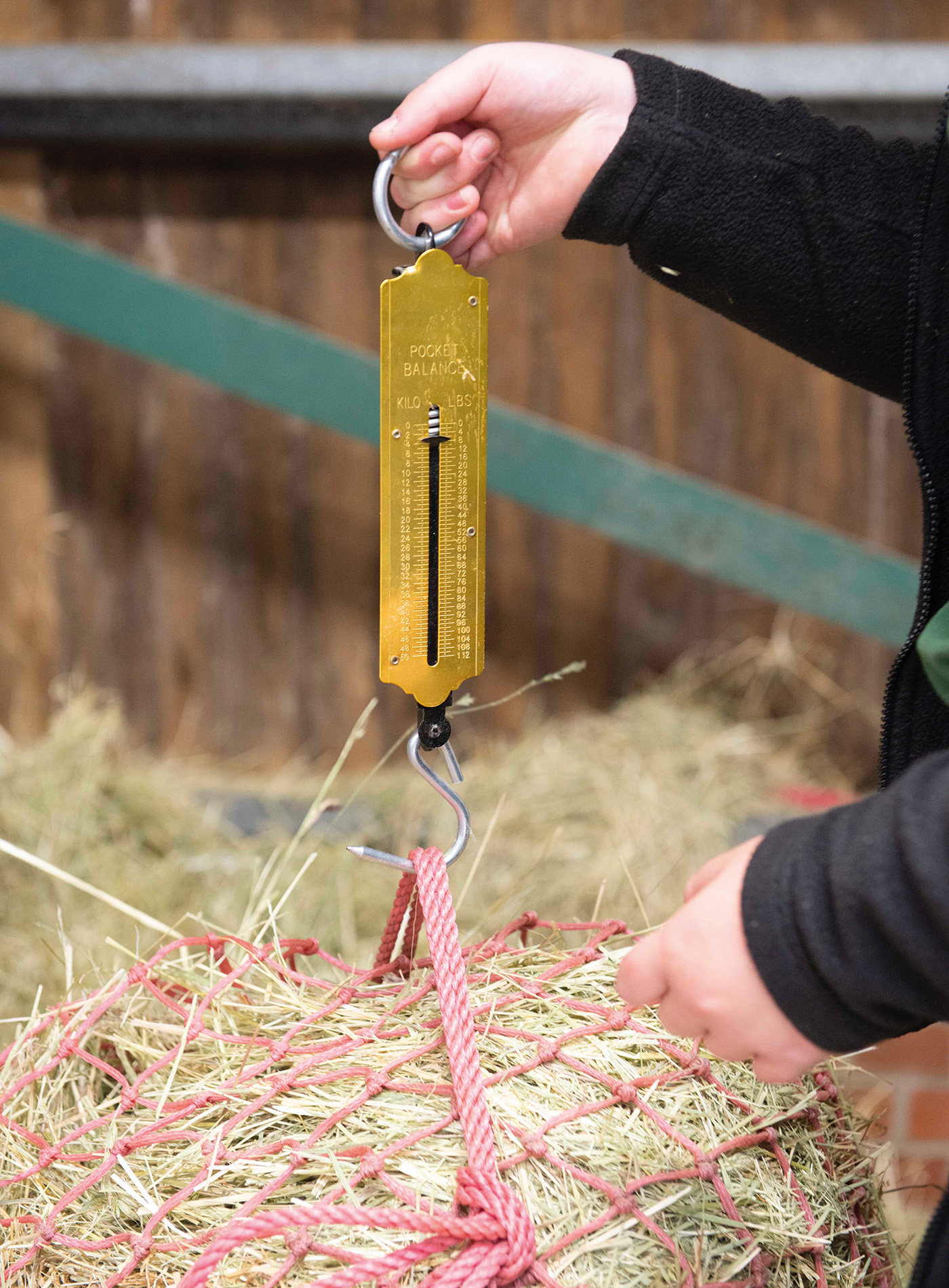Even forage and pasture can contribute to an excess of sugar and starch, triggering a cascade of health problems. David Rendle FRCVS offers dietary advice
HORSES evolved on pastures that were high in fibre and low in sugar and starch. As a result, they have adapted to meet most of their energy requirements by fermenting grasses and other plants to release the energy contained within the plants’ fibrous structure.
By harnessing the ability of bacteria to ferment fibre, horses are able to satisfy their nutritional needs through the ingestion of forage alone. With domestication, however, it has become commonplace to increase their energy intake through supplementation with feeds high in sugars and starches.
Feeding energy-dense cereals was more convenient and practical than large volumes of forage, particularly when horses worked long hours, under heavy loads, in urban environments. These days, only horses performing extreme levels of exercise require supplementary feeds high in sugar and starch.
Escalating levels of equine obesity demonstrate we are failing to balance energy requirements with feed. It is estimated that around 50% of horses in the UK are very overweight or obese.
When a horse’s energy intake exceeds what he requires to remain healthy and to exercise, the surplus is converted to fat. In addition to providing a means of storing energy, fat produces “signalling molecules” that alter the metabolism – with the most notable change being a reduction in the responsiveness to insulin.
More insulin must then be produced to compensate, increasing the risk of laminitis. This combination of obesity, reduction in sensitivity to insulin and an increased laminitis risk has become known as equine metabolic syndrome (EMS).
Obesity is associated with many other health problems, including orthopaedic disease, accelerated ageing, developmental problems in youngstock, colic and poor performance. Feeding excess sugar and starch can disrupt normal bacterial fermentation in the large intestine, resulting in combinations of colitis, laminitis and the systemic disorder endotoxaemia. Starches also increase the production of acid in the stomach, increasing the risk of gastric ulcers.

Weighing hay
PASTURE PERILS
THE simplest means of reducing a horse’s energy intake is to feed him solely forage, with an additional vitamin and mineral balancer. In favourable conditions, however, 30% of the weight of some grasses may be sugars and starches – meaning that their energy content is similar to that of some cereal-based feeds. While eliminating cereal-based feed is a good start to reducing sugar intake, for most horses this is not enough to prevent weight gain.
The sugar and starch content of grass varies dramatically, so consideration must be given to the quantity and type of grazing or forage that is being fed. Levels of sugar and starch in grass are at their highest:
- In pastures of cultivated (rather than native) grass species, such as ryegrasses, which were developed to maximise production in the livestock industry. While grass should be kept healthy, fertilisers will increase volume.
- During conditions of plant growth, when sunny weather combines with sufficient moisture. Grass seed heads are high in starch and the total sugar and starch content will reduce once the grass has shed seed and becomes woody.
- In sunny but cold or frosty weather.
- Later in the day, meaning that turnout in the morning is preferable to turnout in the evening. The sunnier the weather, the more rapidly sugar levels will increase; in bright conditions, levels may peak by midday. Grass in full sun is likely to have a higher sugar content than grass in shade.
- On heavily grazed pasture or freshly cut hay stubble. Although there will be less grass available, what remains can have a very high sugar content. Restricting the intake of healthy, steadily growing native grass is preferable to using overgrazed or stressed pasture.
While these factors are worthy of consideration, ultimately the only means of reducing energy intake to an appropriate level in a horse that is obese is to limit his access to pasture.

Alfalfa can be used if you need to give feed to administer medication
When pasture access is restricted, there is likely to be a requirement to feed forage in the form of hay or haylage. The aim is to feed forage with less than 10% sugar and starch after water is removed – that is, less than 10% of dry matter.
Haylage is often perceived to be more energy dense, yet it typically has a lower sugar and starch content as the sugar is fermented after the forage is wrapped. Hay is typically around 90% dry matter (10% water) and haylage around 60% dry matter (40% water). When comparing by weight, more haylage has to be fed to provide the same nutrient content.
The type of grass used and the manner in which it is preserved will have a significant influence on both the water and energy content of the resulting forage, hence the value of forage analysis. This is relatively inexpensive and well worth doing, allowing you to make informed decisions around how much forage to feed rather than just guessing. For maximum benefit, feed the same forage consistently rather than changing sources or batches.
Sugar levels in hay can vary by up to 100% and will be determined by the factors that affect the sugar content of grass when it is cut. Hay that cures slowly in mild conditions, rather than drying out rapidly in very hot weather, will have lower levels as some of the sugar will be broken down. Soaking hay prior to feeding is another effective way of reducing sugar content.
THE BOTTOM LINE
RESTRICTING a horse’s energy intake can appear complicated, but the fundamentals are very simple. Most horses only need fresh or preserved grass to provide their energy requirements; cereal-based feeds are rarely necessary.
Remember that fruit, vegetables, molasses and grains are all high in sugar and starch and are best avoided other than as an occasional treat. If you need to give feed to administer medication, use grass, alfalfa cubes or chaff rather than cereal-based mixes or cubes.
In sunny conditions, most horses given unlimited access to grass will eat more than is good for them; some form of pasture restriction is necessary. While little can be done to control the levels of sugar and starch in pasture, understanding the variables will allow better management of your horse’s energy intake.
Sugar levels in hay and haylage will also vary markedly, so forage analysis can be very helpful in assessing requirements. It is well worth seeking professional advice that is relevant to your particular situation.
Simple science: sugar and starch

CARBOHYDRATES are one of the three main classes of foods, along with proteins and fats, and provide a horse’s primary source of energy.
Carbohydrates may form part of the structure of grass (termed structural carbohydrates), or are stored by the grass as sugar or starch. These non-structural carbohydrates can be digested easily and absorbed rapidly. Glucose, fructose and galactose are the simplest sugars and the building blocks for other carbohydrates. Starches are chains of simple sugars that are broken up easily and also readily digested.
Most sugars and starches are absorbed in the small intestine. Food and water move through the small intestine in around 45 minutes; any excess sugars and starches, along with structural carbohydrates and proteins, pass through it to reach the large intestine.
Structural carbohydrates, commonly termed “fibre”, are fermented in the large intestine by bacteria. The resultant volatile fatty acids produced can be absorbed by the horse and also provide him with energy. Sugars absorbed from the small intestine should provide a relatively small proportion of the horse’s energy requirements; far more should come from the fermentation of fibre in the large intestine.
This feature is also available to read in this Thursday’s H&H magazine (22 April, 2021)
You may also be interested in…

Ataxia explained: why a horse might become weak, wobbly or unable to stand *H&H Plus*

Inside the stifle: explaining injuries in horses within this joint *H&H Plus*

Focus on fluids: how to rehydrate a sick horse *H&H Plus*

The dangers of overreach and strike injuries *H&H Plus*
Sharp contact between a hind hoof and a foreleg can cause significant injury, as Dr David Stack MRCVS explains

